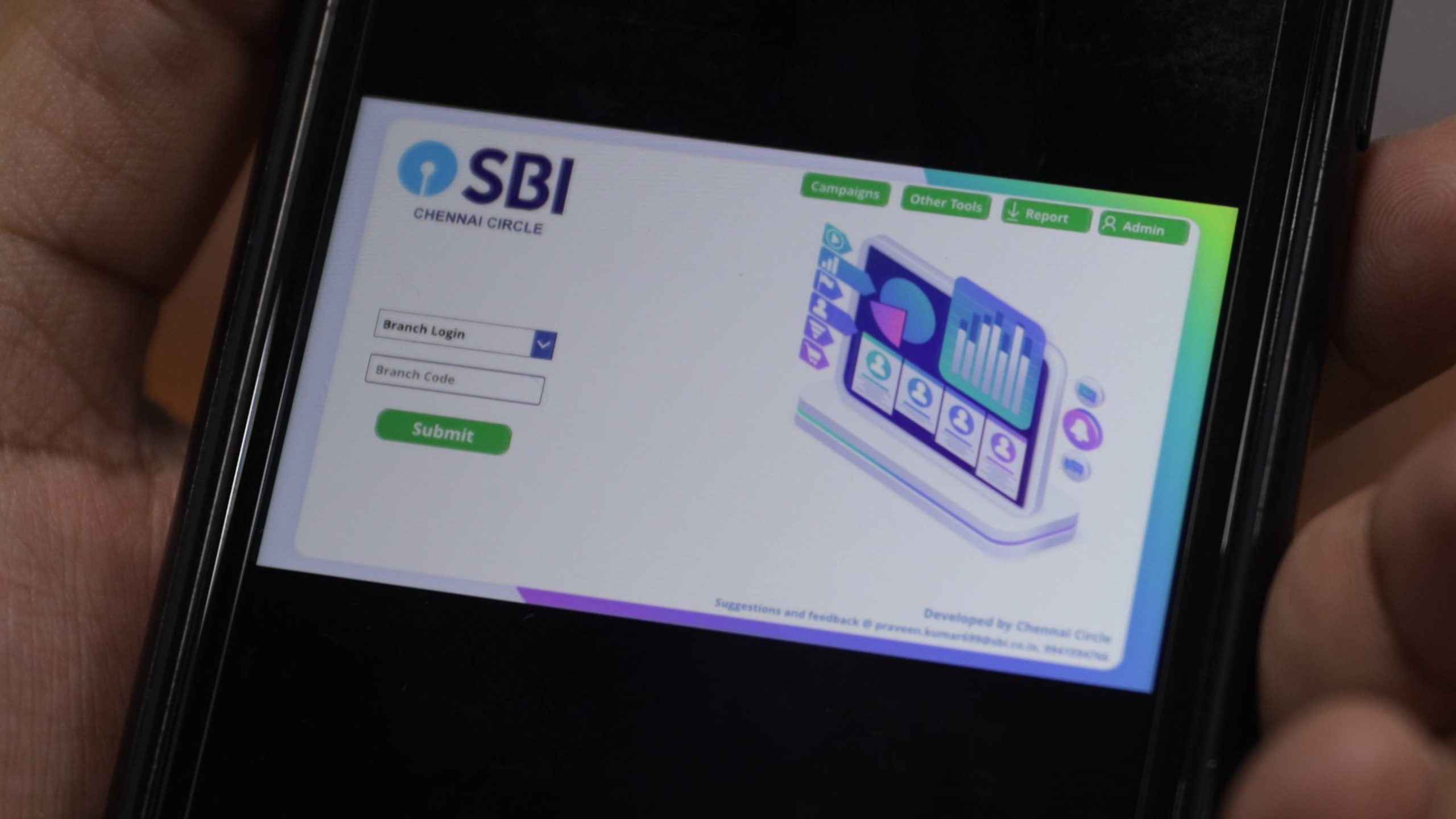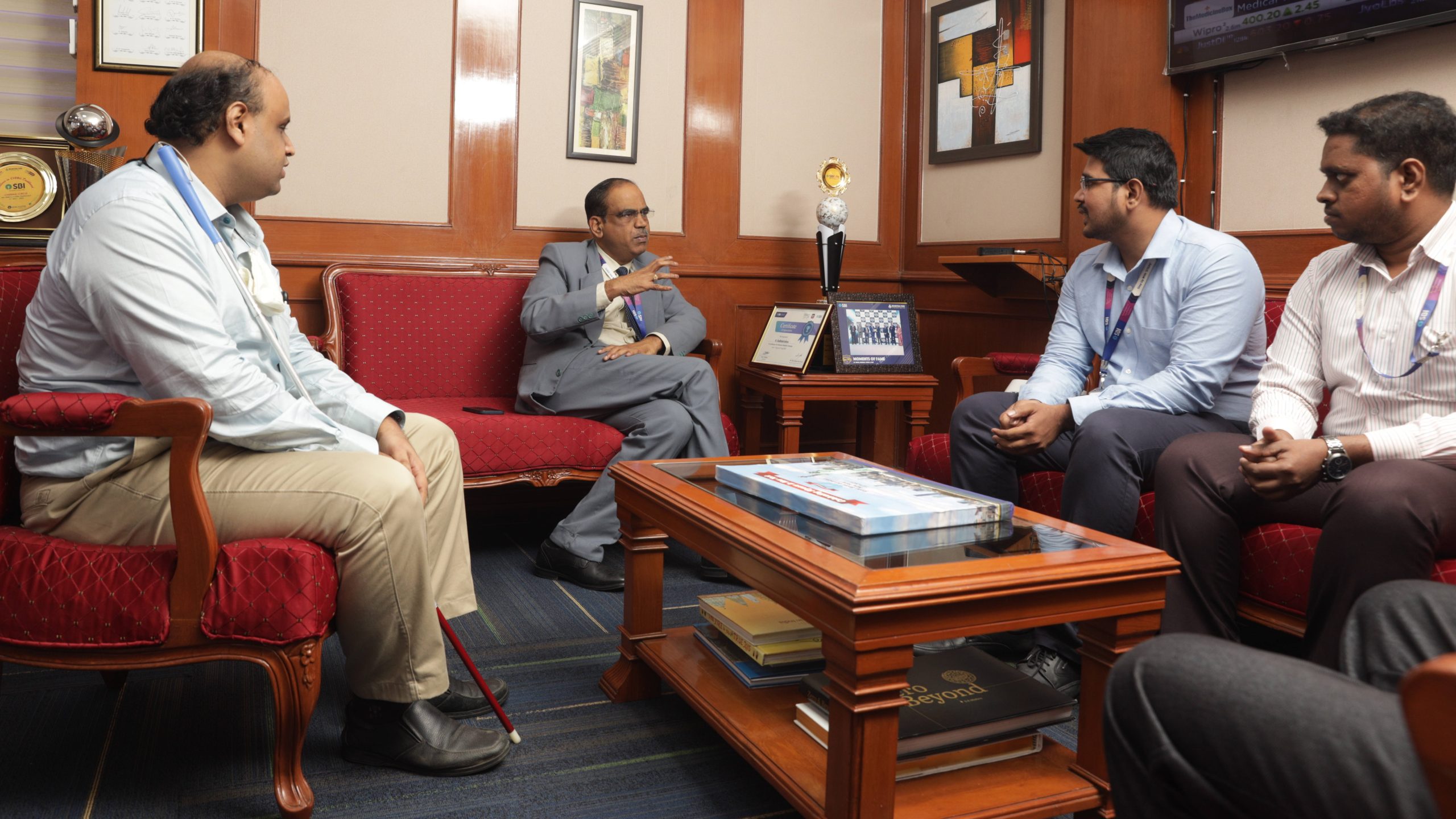
Employees at India’s largest bank embrace the citizen developer revolution with Microsoft Power Apps
When B. Ramkumar was tasked with preparing daily reports on marketing leads from hundreds of Microsoft Excel sheets for his managers, he figured there had to be a more efficient way to get the task done.
Ramkumar’s team collates all the reports that each of the nearly 1,500 offices under their jurisdiction send them. These reports, created by multiple teams within each office, contain potential leads for the sales teams to follow and are an important tool for the management to identify new business opportunities for the bank. Except the reports wouldn’t always get uploaded correctly and multiple users working on live data would cause significant data loss.
“While we could collect all this information from various sources, there was no centralized location to store and follow up on them. I wanted us to do more at a local level, so we could track these better,” says R. Radhakrishna, chief general manager of State Bank of India’s Chennai local head office.
SBI is the country’s largest bank with over 450 million customers and more than 250,000 employees. Today, all SBI’s employees have Office 365 and use services, such as OneDrive, Teams, SharePoint Online and Power Apps, as part of a digital transformation that the 220-year-old bank underwent in 2017.
At a time where there’s an app for almost everything, Ramkumar, a manager in the digital and transaction banking unit at SBI’s Chennai office, toyed with the idea of creating an app that could automate the data collation process and present the data visually.
“I thought, why not convert the Excel sheet we send out into an app that would be user friendly—not just for the people in the branches, but also for the back offices that were monitoring the data? Which is how we came up with the idea of the Digi Toolkit app,” he says.
But Ramkumar, who is blind, had no educational background or professional experience in programming. He hadn’t learned basic computer skills in school, unlike his peers, because accessibility in computer technology was still a few decades away.

Enter Microsoft Power Apps, the low-code app development platform that empowers people with little or no coding experience to build apps to improve business processes.
With Digi Toolkit, employees can input the data into the app where the collation process is automated. In the backend, Digi Toolkit is also able to deliver far more accurate data. Since users only have access to the data they input (versus an entire shared sheet) this avoids intentional or unintentional tampering, and every piece of data can be traced back to who entered it.
This data is relayed back to the branch managers, who now have a singular view of all the products their customers are interested in. Before, each team would pursue that customer lead independently.
With Digi Toolkit, the branch manager now knows all the products that an individual customer has expressed an interest in and is able to brief them over a single call instead of multiple calls from different teams.
For Radhakrishna, the app provides a consolidated view of the performance of every branch in an easy to consume fashion rather than having to pore over Excel sheets.
“We are now able to capture leads more effectively and also track and follow up on them,” he says.

Digi Toolkit was Kumar’s second outing with Power Apps. But to fully execute his ideas, he realized he needed help, as this project was much larger in scope than anything he’d built earlier.
“We happened to meet when I was presenting a complaint escalation tool I’d built using Power Apps for the digital and transaction banking unit,” said Praveen Kumar, an assistant manager overseeing home loans for SBI in Chennai circle. “Even though I don’t have any coding experience, I realized he was struggling with Power Automate as it wasn’t completely accessible, so I teamed up with him.”
Another colleague jumped in to test the user interface elements when Ramkumar was done creating the app.
“In 2020, when I first started using it, Power Apps wasn’t as accessible as it is now. So, I was only able to generate ideas but was not able to contribute anything to designing the interface or coding. But, over time, Power Apps has become a lot more accessible,” he said. “I’m eagerly waiting for the next opportunity where I can chip in to create yet another app. And to think I don’t even know how to code!”

Vidya Krishnan, SBI’s deputy managing director for IT, finds Power Apps to be a “powerful and flexible” platform that’s enabling the bank’s staff to build custom business solutions that are tailored to their specific needs.
“The adoption of new technologies can lead to culture changes within an organization. For example, the introduction of new collaboration tools could change the way that teams communicate and work together, and the adoption of new productivity tools could change the way that work is organized and managed,” she says.
Fathima Syed is another employee who’s using Power Apps. But unlike Ramkumar, who had no IT background, Syed is an engineer. She works at SBI’s Hyderabad office, where her team handles and maintains servers.
She struggled to provide solutions for software development requests that came her way.
“We don’t have a lot of product development happening,” she said. “This is obviously not feasible every time because not all requests warrant hardcore programming. For these, we use Power Apps,” she says.
Syed discovered Power Apps quite by chance. While responding to a request from one of her colleagues at the branch level, she suggested using Microsoft Forms to lodge a complaint. Her colleague recommended that Syed use Power Apps instead, so it could be a two-way communication where complainants could also track the status of their request.

Over time, she has developed half-a-dozen apps. Some solve a one-time problem like collating data of all hardware connected to a bank branch’s network for inventory purposes, while others address ongoing issues like logging office maintenance complaints or collecting photos of server racks from various branches to ensure they’re well maintained.
One app that’s currently live uses the Power Automate feature in Power Apps to add a flow to emails that have tasks for branches in them. The emails could be as simple as announcing the start and end day for sales and marketing campaigns.
The Power Automate flow automatically adds the task to the recipient’s Outlook calendar as a reminder. The app is currently live for more than 100 branches that fall under the Hyderabad local head office and will be rolled out to nearly 1,300 branches.
“This saves a lot of time as no one has to call every branch and remind them of upcoming deadlines to meet,” Syed says.
Syed likes that she’s able to provide solutions for her colleagues without having to devote a lot of time or requests for precious IT resources.
Power Apps is being leveraged to develop several solutions across SBI offices around the country. From capturing attendance to conducting quizzes at staff training centers to ensuring ATMs are accessible for people with disabilities, there are Power Apps in place.
The adoption of Power Apps has taken off with more than 300 apps in regular use and more than 1,400 apps developed.
For Radhakrishna, the chief general manager of SBI’s local head office in Chennai, Power Apps has become a canvas for new innovations. Recently, his team launched QR codes that SBI’s customers can scan to enter their requirements.
“Now we can have customers fill their details themselves and the leads get collated into the Digi Toolkit system automatically. This wouldn’t have been possible without Power Apps,” he says.
The banking behemoth is in the process of setting up a Centre of Excellence for Power Apps that won’t just drive adoption, but also will find ways to scale up some of the apps at an organizational level while also adding a governance layer to the entire exercise.
“SBI and Microsoft could collaborate and explore for setting up of a joint Centre of Excellence, to offer hands-on training and brainstorming to innovate, digitize and automate the routine business processes,” says Krishnan.
Top photo: B. Ramkumar, a manager in the digital and transaction banking unit at SBI’s Chennai office, developer the Digi Toolkit app using Microsoft Power Apps. Photo by Sri Loganathan Velmurugan for Microsoft.
Abhishek Mande Bhot is an independent writer and editor covering news, lifestyle, and luxury for publications in India and the US.
